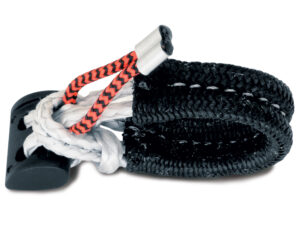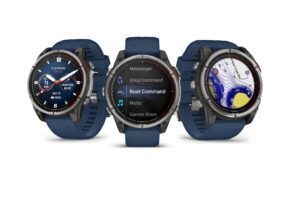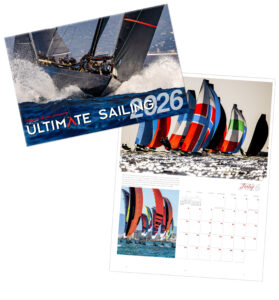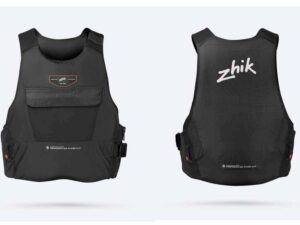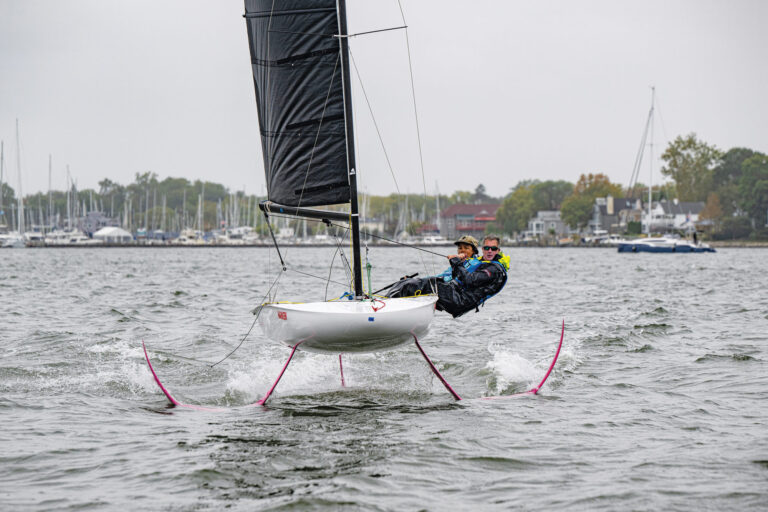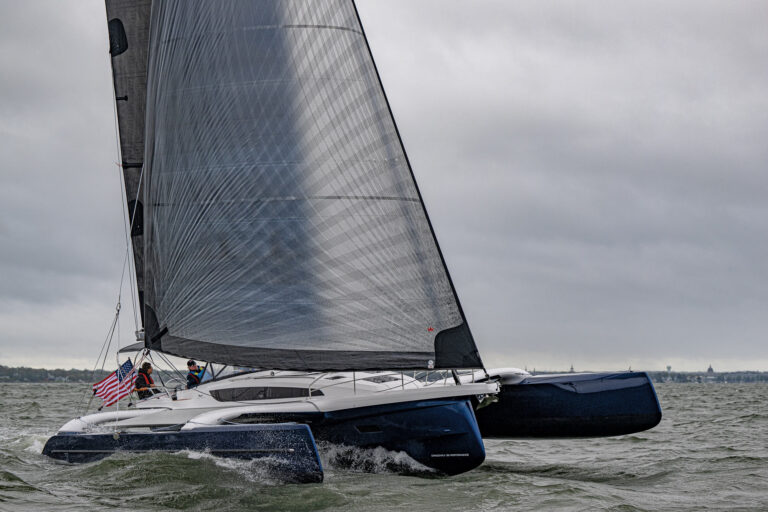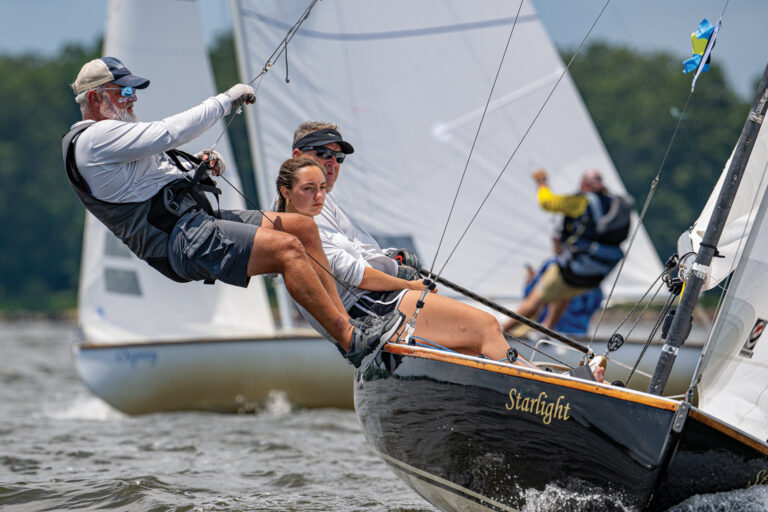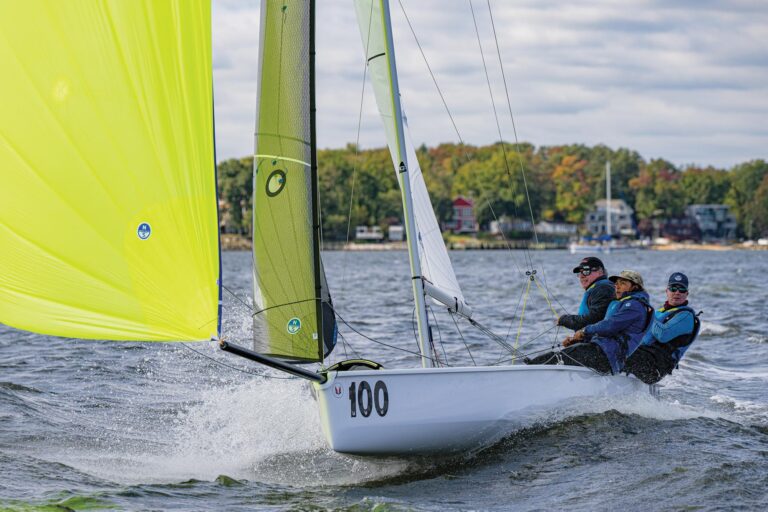Through all my years of dinghy sailing, especially come Laser frostbite season, the debate has carried on in my head: what’s it going to be today, wetsuit or drysuit? If I’m certain I’m not going to be spending much time in the water, the wetsuit’s the way to go: it’s simply less cumbersome than a drysuit and less likely to snag on my mainsheet during tacks and jibes, as my drysuit tends to do. But, I’m no fan of relieving myself in a wetsuit-never have been, never will be-and after a few hours of sailing, the wetsuit chill inevitably sets in, even if I’m dry (rubber is a heat conductor after all). So in the past few years, I’ve become a greater fan of the drysuit, if for only one reason: I like being dry on a cold winter’s day. When I’m dry, I’m concentrating, which means I’m sailing smarter (hopefully) and faster.
Buying a drysuit is a straightforward affair, but it does pay to shop around and try on different brands. A drysuit must accommodate bulky under layers and a wide range of body types so one brand may fit better than another. Obviously, you want one that’s streamlined (i.e., less baggy) and one that will last for years, but there are a few other key details: especially the zipper type and location, and, most importantly, the seals. Let’s take a look at the most popular offerings on the racks and what each has to offer.

One inherent problem with drysuits past was the lack of breathability. As you hiked your way around the racecourse, you’d essentially steam in your perspiration. Perspiration begets heat loss, and eventually, chills. This problem is virtually eliminated with the use of Gore-Tex and similar fabrics nowadays, provided you layer properly with wicking fabrics. Repeat: proper wicking fabrics-without them it’s senseless to pay for an expensive breathable suit.
The Musto MPX uses Gore-Tex’s top-of-the-line breathable fabric, which contributes to it being at the upper end of the price range ($675). But it’s well worth it. Given the price point, Musto doesn’t skimp on the details, and this drysuit is very well designed-in fact, says Musto’s John Clemenson, it’s so well designed they haven’t changed it in years, and don’t intend to do so. A great feature is its zipper, which is very flexible and runs smoothly over the shoulder without buckling. “We’ve tried back and front zippers,” says Clemenson, “but we found the front zip is best because it’s more comfortable; you don’t have to have someone nearby to make sure the zipper is fully closed, and it’s easier to vent the suit from time to time.”
The legs and arms are articulated, providing a more comfortable fit when sitting in a crouched position for long periods and less fabric pile-up at the bend points (elbows and knees). There is heavyweight Cordura reinforcement in the seat and knees, a thigh pocket, and a waist belt that cinches excess fabric.
While most manufacturers have gone to neoprene for neck and wrist seals, Musto is sticking with good old-fashioned latex, which makes the drysuit technically watertight. All said, this is a drysuit that, with religious rinsing and care, will last a dinghy-sailing lifetime-in other words, your knees will likely fail before it does.

henrilloydonline.com Henri-Lloyd
Using the lightweight TP1 breathable fabric it uses in some of its wet weather gear, Henri-Lloyd has come up with a suit that’s priced very well ($449) in the drysuit range. The fabric is some of the lightest, most supple, breathable fabric you’ll find: if your trading up from your PVC drysuit, you won’t believe it’s actually waterproof. Purists will argue that this suit, with its neoprene neck and wrist seals, is not technically as waterproof as it would be with latex seals, but Henri-Lloyd’s Jeff Earl assures us that the neoprene is plenty watertight. “If the suit is properly burped [crouching and releasing the air inside],” he says, “you’ll get a good, tight seal.”
The advantage of the neoprene seal, he adds, is comfort, and ultimately fewer seal replacements over the life of the suit. It also lessens the need to custom-cut restrictive latex seals, which, if not done carefully, can introduce nicks. “Once you nick a latex seal, which is easy to do if you leave your watch on when you’re stripping off the suit,” he says, “you’ll eventually need to replace it.” The suit does have latex booties, however, which is critical, given the heat loss neoprene booties would induce from your extremities.
The front-zipper design on the Stealth is excellent; it’s flexible and lays nearly flush with the suit. They use a T-ZIP zipper, which, unlike most metal drysuit zippers, allows you to restart the zipper should it jump its track. Essential features include thigh and sleeve pockets, internal braces to hold the suit up (you want a drysuit to hang off your shoulders, not your waist), and Cordura reinforcement in the knees and seat.

One way to streamline a drysuit without restricting movement, says Gul’s Gareth Knocker, is to simply build stretch into the suit, as they’ve done with their Code Zero Stretch Front Zip Drysuit. Using a watertight neoprene back panel that continues into the underarms, he says, the Code Zero does away with the restrictive feel of a typical drysuit. “The whole point is that, when you’re leaning in, it’s not riding up your back,” says Knocker. “It’s a snugger fit so there’s less material flapping around.” The neoprene panels have a membrane on the inside so waterproofness, I’m told, is guaranteed. The rest of the garment is made of Gul’s most durable four-layer fabric, which Knocker says makes for a “ballistic suit.” The seat and knees are reinforced, and the zipper is heavy-gauge metal.
At $720 this drysuit is at the upper end of the price range, but it does have all the necessary features: internal suspenders, reinforced knees and seat, and a thigh cargo pocket. The neck and wrist seals are Glide Skin neoprene, which has a smooth lining on the skin side that has low heat conduction, and is ultimately more comfortable, and more watertight than straight neoprene. The suit’s latex booties are protected by long, overhanging cuffs.

Zzzzzzip. That’s the sound of relief, which is the result of the strategically placed relief zipper on Kokatat’s Meridian Drysuit. Anyone who’s spent a lot of time in a drysuit will agree that this is one outstanding feature, a detail that should be on every suit. Even Kokatat’s women’s drysuit has a drop-seat zipper, which might explain why this is one of the more popular drysuits on the college-sailing circuit. Designed primarily for paddling sports (kayaking), the Meridian has all the features you’d want for dinghy sailing, too.
This drysuit does, however, come with a hefty price tag ($999), but the fabric is high-end Gore-Tex (thus the price), and the suit has latex seals throughout, all with neoprene over-cuffs to protect the latex from nicks and tears. Paddlers don’t like bulk and excess fabric up top, so consequently this suit is as trim and slim as any of the rest, if not more so. There’s a simple bungee drawcord at the waist to take up any excess bulk. One excellent feature is the use of Gore-Tex socks in lieu of latex booties (which, again, contributes to the price). Given the high perspiration rate of your feet, it makes absolute sense to keep moisture moving away from your toes as well. The Gore-Tex booties will also prove to be more durable, should you step on a pebble while disrobing.

gillna.com Gill
Gill redesigned its popular drysuit in 2007, and in doing so, switched from an across-the-back zipper, which most serious racers still prefer, to a front zip, which the greater junior-sailing populace demands. Gill uses its most top-of-the-line waterproof/breathable fabric to make what Gill’s Jerry Richards says is one of the most breathable and durable drysuits on the market. For neck and wrist seals, they’ve opted for Glide Skin neoprene rather than latex, and now use a heavy-duty brass zipper, a concession to safety and durability. “Our zipper is the most expensive we can buy,” says Richards. “We sell to a lot of junior and college sailors, so we’re not willing to risk any sort of failure on the drysuit.”
In designing this front-zip drysuit, Gill paid a lot of attention to streamlining the cut, which Richards says is always a challenge, given that, once a user crouches, there’s a lot of pull at the shoulders. Articulated leg and arm panels help reduce this.
One useful feature of this well priced, $589 suit is that the seals are embossed with “trim lines” to make sure you cut straight and neat when trimming the seals to fit, something none of the other manufacturers offer (because it’s patented, for now). There are internal suspenders, an elasticized waist, a waterproof thigh pocket, and Cordura reinforcements in the knees and seat to help with abrasion. If there’s a lot of kneeling involved in your sailing (i.e., Optimist sailors), Richards advises the use of knee pads to protect from abrasion.

